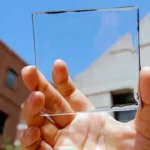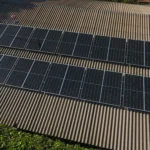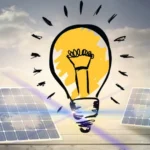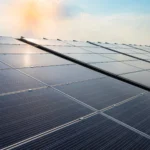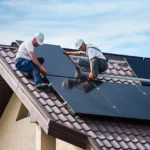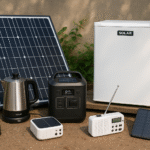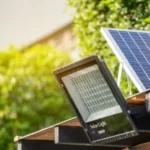Ever feel guilty about watering your lawn during peak energy hours or dry spells? You’re not alone.With rising electricity costs and growing awareness of water conservation, homeowners and small businesses are seeking sustainable irrigation alternatives. One standout solution is the Solar Water Sprinklers.
This blog will walk you through what solar sprinklers are, how they work, their benefits and limitations, and how to choose and install the right system for your property.

What Is a Solar Water Sprinkler?
A solar water sprinklers is a self-contained irrigation system that utilizes solar energy for its power. It typically includes a small solar panel, a battery, a pump, and a sprinkler head or drip line.
This system is designed to water your garden or lawn without relying on electricity from the grid. That makes it a clean-energy choice for off-grid living, remote gardens, and eco-conscious homes.
Key Components of a Solar Sprinkler System
- Solar Panel: Converts sunlight into energy for immediate use or battery charging
- Rechargeable Battery: Stores excess energy for use during the night or cloudy weather
- Water Pump: Pushes water from a reservoir or tap through irrigation lines
- Irrigation Delivery: Sprinkler heads or drip emitters distribute water efficiently
- Controller: An Optional smart feature that allows for timing and moisture-based control
why Switch to Solar Water Sprinklers?
Conventional irrigation systems are tied to grid electricity and can be expensive to run. In addition to energy use, these systems often require professional installation and regular maintenance.
Solar water sprinklers, on the other hand, offer a more flexible and sustainable alternative for managing your watering schedule.
Lower Utility Bills
Running a traditional 1000-watt irrigation pump for just 30 minutes daily can cost you $10–$15 per month, depending on your local utility rates. A solar system eliminates that energy expense altogether.
You pay once for the equipment, and the sun powers it for free from then on. The ROI becomes even clearer over time.
Easy to Install
Most solar sprinkler kits are designed for DIY installation. They come with all necessary fittings and don’t require trenching, electrical wiring, or professional labor.
You can typically set up a basic system in under two hours using household tools.
Environmentally Friendly
Switching to solar helps reduce your carbon footprint. According to Energy.gov, using solar energy in any form reduces reliance on fossil-fueled grid power, which still accounts for over 60% of energy in many U.S. states.
Drip irrigation models further minimize water waste by targeting plant roots directly, rather than spraying large areas of land.
Ideal for Off-Grid Living
If you own a cabin, greenhouse, or remote garden plot, solar systems provide reliable irrigation without the need for running electricity.
Even if you’re on the grid, solar offers peace of mind during power outages or watering restrictions.
Reliable in Varying Conditions
Advanced solar sprinkler kits include lithium-ion batteries that store energy during the day. This allows the system to operate after sunset or during overcast conditions with minimal performance drop.
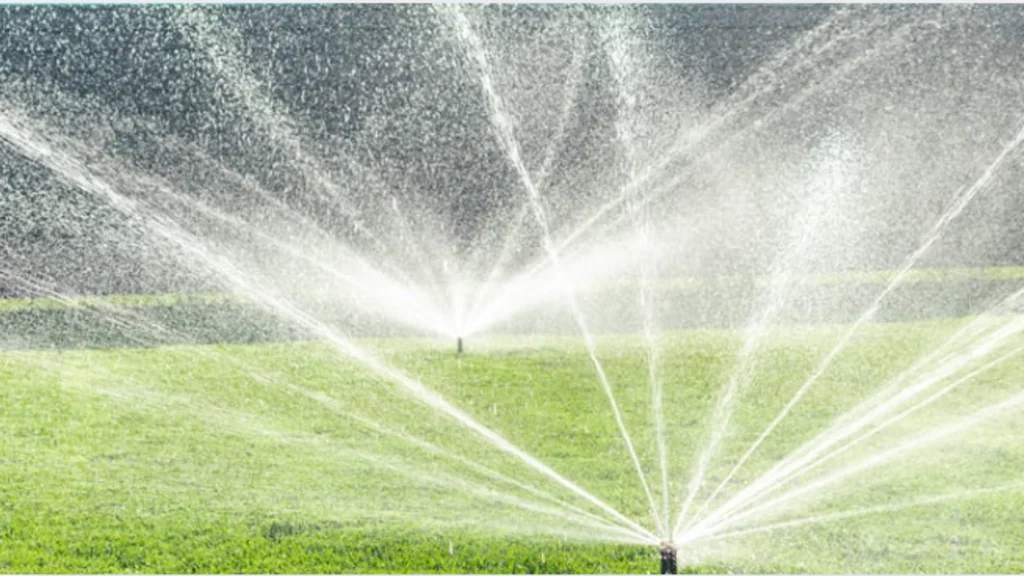
Real-Life Story: Arizona Homeowner Goes Solar
Mary Ellis, a homeowner based in Tucson, Arizona, shared her solar sprinkler journey:
“Last summer, our wired irrigation system failed just as the temperatures hit triple digits. I was hesitant to spend thousands on another electrical fix, so I tried a solar water sprinkler kit. It was a game-changer. It waters my raised beds at sunrise daily, and I haven’t touched it since setting it up six months ago.”
Mary’s experience is increasingly common in the southwest U.S., where sunlight is abundant and energy costs are rising.
Efficiency and Performance Insights
Just how well does a solar water sprinklers system work? The answer depends on several environmental and technical factors.
A well-sized and properly installed unit can provide consistent water delivery for lawns, vegetable beds, or small orchards.
What Affects Solar Sprinkler Efficiency?
- Sunlight Access: Panels need 5–6 hours of direct sun daily for optimal charging
- Battery Capacity: Look for units with at least 2000–3000mAh batteries for daily cycles
- Pump Head Height: Choose a pump with enough lift (in meters) for your landscape slope
- Flow Rate: A 360L/hour pump suits most home gardens. Higher flow may be needed for large plots
According to the National Renewable Energy Laboratory (NREL), a 10W solar panel can easily sustain a low-flow irrigation pump for 1–2 hours daily under full sun.
click here : solar electric fence
Known Limitations and How to Overcome Them
Solar irrigation isn’t perfect. But most issues are minor and can be avoided with thoughtful planning or product selection.
Understanding these challenges helps you make smarter buying and installation decisions.
Issue: Weak Water Pressure
Solution: Opt for a pump with at least 3–5 meters of vertical lift. This ensures adequate pressure even in uneven terrain.
Issue: Short Battery Life
Solution: Avoid cheaper systems with underpowered batteries. Choose lithium-ion batteries over nickel or lead-acid. Replace batteries every 2–3 years for optimal performance.
Issue: Cloudy Day Performance
Solution: Select kits with smart controllers or dual charging capability (solar and USB) for backup power options.
Issue: Blocked Nozzles
Solution: Clean sprinkler heads and filters monthly, especially in areas with hard water. Use mesh filters to prevent debris buildup.
Step-by-Step Installation Guide
Installing a solar water sprinklers system is a straightforward process if you follow a few basic steps. Here’s a simplified guide to help you get started.
Step 1: Select the Right Kit
Match the system to your lawn size, watering needs, and sunlight availability.
- For container gardens: 5W panel, 360L/hr pump, drip lines
- For small lawns: 10–20W panel, rotary head sprinklers
- For large yards: 25W+ panel, multi-zone timers, elevated tanks
Step 2: Position the Solar Panel
Install the panel in a location that receives full sun between 9:00 a.m. and 3:00 p.m. Use a tilt angle of 30–45 degrees based on your latitude.
Secure it using brackets or ground stakes, and ensure it’s positioned away from foot traffic and lawn equipment.
Step 3: Connect the Pump and Battery
Use waterproof connectors and follow polarity markings carefully. Most kits are color-coded for easy setup and assembly.
Place the pump inside a water reservoir, bucket, or nearby tank. Ensure it’s submerged and away from debris.
Step 4: Run Irrigation Lines
Lay out hoses or drip tubing toward your garden zones. Use stakes to secure the lines, and adjust the emitters or sprinkler heads according to your layout.
Step 5: Test and Adjust
Power on the system, run a full cycle, and observe the spray pattern. Make changes as needed to pressure settings or line placement.
click here : Bifacial solar panels
Maintenance Tips to Keep It Running Smoothly
Proper maintenance ensures your solar sprinkler performs year-round with minimal issues. Most tasks require just a few minutes each month.
Here’s what you should focus on.
Monthly:
- Wipe solar panels clean with a damp cloth to remove dirt, bird droppings, or dust
- Check battery charge levels, especially in shaded or rainy seasons
- Flush drip lines to remove sediment or algae buildup
Seasonally:
- Inspect tubing for cracks or leaks
- Clean filter screens on the pump inlet
- Replace nozzles if they become worn or clogged
From my time consulting with installers in Southern California, I found that homeowners who committed to quarterly maintenance had longer-lasting and better-performing systems, often with 10–15 percent greater watering efficiency.

Comparing Solar Water Sprinklers to Traditional Systems
Is a solar water sprinklers really better than a wired system? In many cases, yes. Below is a direct comparison to help you make an informed decision.
| Feature | Solar Water Sprinkler | Traditional Electric Sprinkler |
|---|---|---|
| Power Source | Solar (Free) | Grid Electricity |
| Installation | DIY / Simple | May Require an Electrician |
| Monthly Cost | $0 | $10–$30 |
| Carbon Footprint | Very Low | Medium to High |
| Water Conservation | High (with drip kits) | Moderate |
| Maintenance Needs | Low | Moderate |
| Off-Grid Capable | Yes | No |
Top Use Cases for Solar Irrigation
Solar water sprinklers are no longer a niche product; they have become a mainstream solution. They’re being used across industries and property types to solve real irrigation problems.
Homeowners
Solar systems are ideal for watering lawns, vegetable beds, flower gardens, or backyard trees, especially in sunny regions like the Southwest.
Small Farms and Greenhouses
Many small-scale growers and market gardeners use solar-powered irrigation to automate watering in hoop houses or raised beds.
Remote Cabins or Off-Grid Properties
Solar sprinklers provide critical watering capability where electrical access is limited or unavailable.
Commercial Landscaping
Office buildings and schools with solar gardens often utilize these systems to maintain healthy green areas without incurring high power bills.
Where to Buy and What to Look For
When shopping for a solar sprinkler system, it’s essential to choose quality over price. Poor components lead to early failure and frustration.
Buying Checklist
- Panel Wattage: At least 10–20W for consistent daily use
- Battery: 2000mAh+ lithium-ion, replaceable
- Pump Type: DC brushless pump with lift rating that matches your layout
- Warranty: Minimum 1 year on all parts
- Smart Features: Look for moisture sensors, timers, or Wi-Fi control
Reputable brands include ECO-WORTHY, Rachio (solar-timer compatible), Orbit, and Netro. Always read verified customer reviews and avoid generic, no-name kits unless you’re confident in your DIY skills.
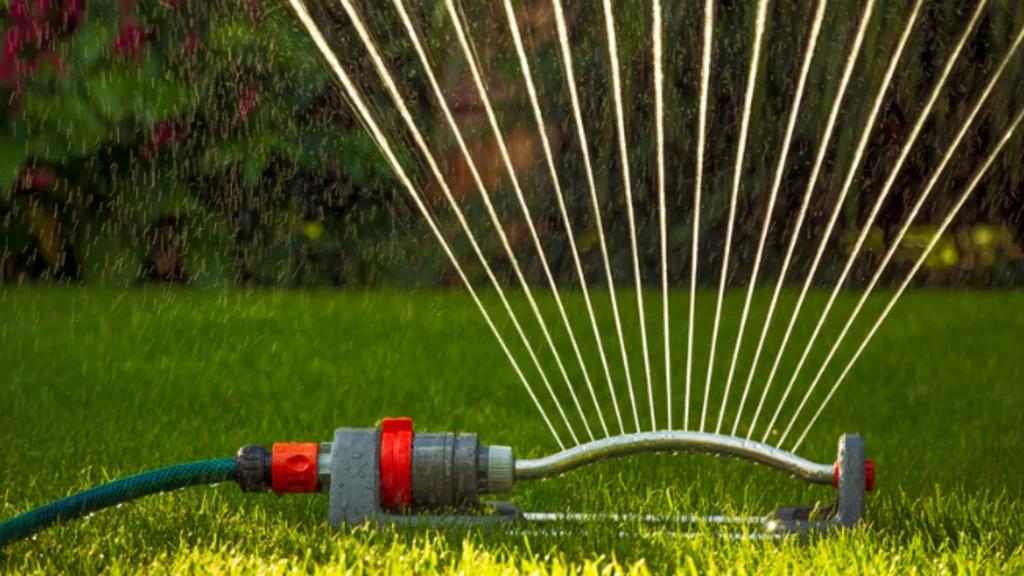
Final Thoughts: Should You Go Solar with Your Sprinkler System?
If you’re seeking a cleaner, quieter, and more efficient way to irrigate your landscape, a solar water sprinkler is a smart investment. It brings long-term cost savings, convenience, and sustainability, all without sacrificing performance.
Whether you want to water a suburban lawn or a vegetable patch in the woods, there’s a solar system that fits your needs.
Ready to Maximize Your Watering Efficiency?
If your garden has been relying on hose timers or manual watering, you could be wasting water and energy daily. A solar sprinkler system offers a modern solution that pays for itself quickly.
Check if your solar exposure is sufficient and explore tailored irrigation kits that suit your property and climate.
Visit egrowatt.com to discover eco-smart sprinkler solutions or schedule a solar inspection to make sure your current system is operating at full efficiency.


